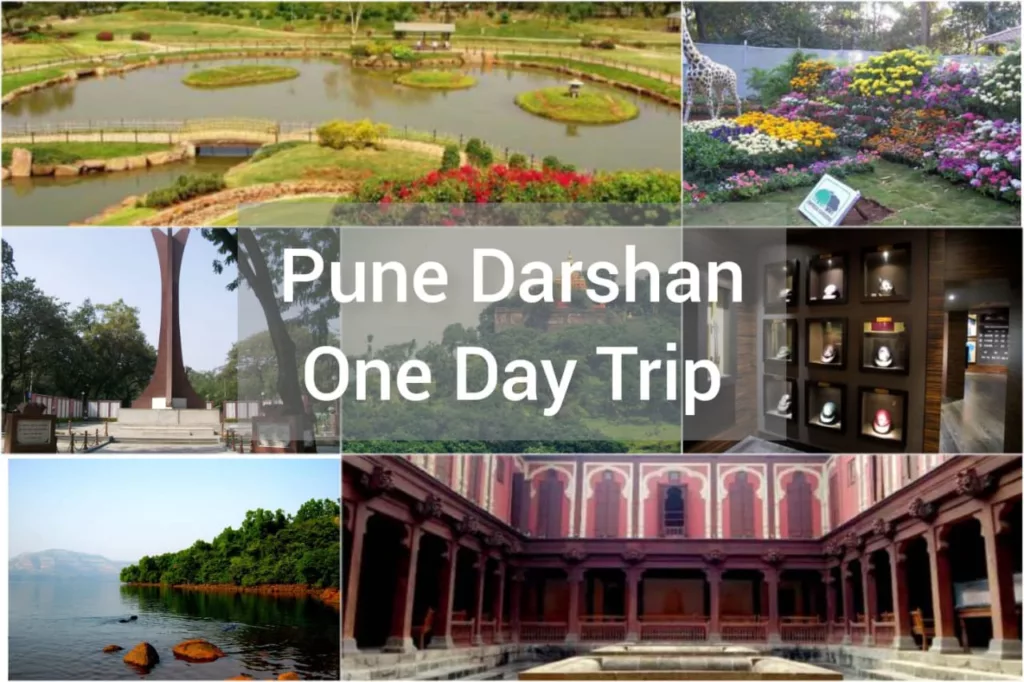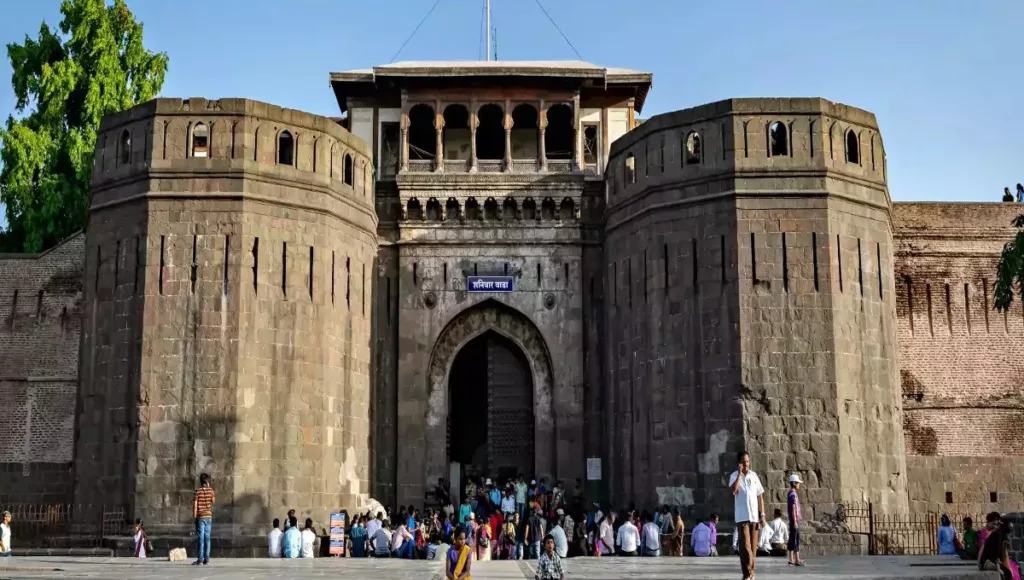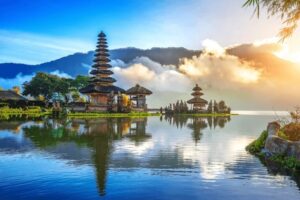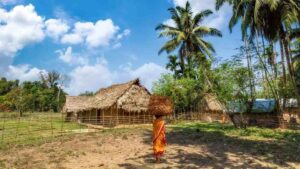Pune Darshan in a one-day trip

Pune Darshan in a one-day trip
Pune: Pune is a city with a plethora of tourist attractions. You can get a glimpse of its heritage and history even if you are here on a one-day trip.
These are some of the best places in Pune, Maharashtra:
The Katraj Snake Park:

It is the most visited and loved tourist attraction in the Rajiv Gandhi Zoo that is located in Katraj, near the city of Pune in India.
Katraj Snake Park is a preferred tourist destination among those who love nature and wildlife. It has a variety of snakes, reptiles, and turtles.
It is a famous zoo that is spread over an area of 130 acres and is managed by the Pune Municipal Corporation. It is divided into three parts: the central zoo, an animal orphanage, and the most famous of all: the Katraj Snake Park. The snake park has successfully managed to acquaint thousands of visitors with the unusual and fascinating wildlife through its extensive collection of snakes, reptiles, birds, and turtles.
This marvellous collection also includes a 13-foot-long king cobra. In 1986, Mr Neelam Kumar Khaire, who was the first director of the park, with assistance from the Pune Municipal Corporation, had created the Katraj Snake Park on the land that was to become the Rajiv Gandhi Zoological Park later on.
The Snake Park organizes a myriad of snake festivals and snake awareness programs to clarify doubts that people may have about snakes and to destroy fears about snakes. During Nag Panchami, the park also arranges programs that aim to focus on discouraging the ill-treatment of snakes.
Things to do at Katraj Snake Park
1. Watching snakes in their habitat
2. Boating in the lake – Katraj Snake Park and Zoo is built around a large lake. You can go boating in the lake.
3. Checking out the library – The library in the vicinity provides plenty of information about snakes.
Shaniwarwada:

This is one of the finest examples of architecture in the city. This grand mansion was built by the Peshwa Bajirao I himself as the residence of the Peshwas. The place never fails to amaze the visitor with its various forts and fountains, and the majestic statue of Baji Rao I that greets the visitor at the entrance of the palace. Although most of the Wada was destroyed by an unexplained fire in 1828, what remains of it is equally thrilling and majestic.
The Shaniwar Wada, although ridden with tales of treachery and deceit, is one of the last standing testimonies to the grandeur, valour, and the just rule of the Peshwas. The entire old part of the city of Pune is laid out in a chaotic yet ironically, orderly fashion all around this historical structure. It is around Shaniwar Wada that you will find the oldest markets of Pune including Laxmi Road, Tulshibaug, Ravivar Peth, etc. You can get a glimpse of history and some drama as well! This was after all the site of the famed romance between Peshwa Bajirao and Mastani Sahiba. In fact, one of the gates has also been named after her!
Sinhagad Fort:

Located around 36 kms southwest of the city of Pune, Sinhagad Fort is built atop a cliff on the Bhuleshwar range of the Sahyadris. Literally translating to ‘Fort of the Lion’, Sinhagad Fort boasts of a rich history. It was initially occupied by the Mughals until it came to be possessed by the Marathas. Lately, it has become a popular source of tourism and is especially popular among trekkers and adventure enthusiasts.
Mulshi Lake:

Mulshi Lake is formed in the catchment area of Mulshi Dam. Known for its scenic beauty due to Sahyadri ranges, Koraigadh and Dhangad fort, it is a perfect getaway for nature lovers
Pune Okayama Friendship Garden :

One of its kinds, the Pune Okayama Friendship Garden is the largest Japanese garden outside of Japan, in Asia. Also called the Pu. La. Deshpande Udyan, it was named after the famous Marathi writer and humorist, Pu La Deshpande who received the Padma Bhushan in 1990. This garden reflects on the Indo-Japanese relationship, as it is inspired by the 300-year old Okayama Korakuen Garden in Japan.
Located on Sinhagad Road in Dattawadi, this park offers the perfect blend between nature and concrete, with a natural canal passing through the garden whilst having man-made ponds and waterfalls. Right from lush green plants, Pergolas to sit at and lawns,beautiful flowers and the artificial hills, this garden has everything that will take your breath away. Visitors come here to take a stroll after a stressful day or even better, plan a trip to this garden to explore the wide variety of flora.
Parvati hill:

Dedicated to Goddess Parvati and God Shiva brought into existence by the great Peshwa ruler Balaji Baji Rao in the 17th century, and rising to over 2,000 feet,
The hill is accessed by climbing 103 stone steps which were originally designed to allow elephants to ascend and descend from the hill. It doesn’t take anyone longer than 10 minutes to reach the top. Resting atop Parvati hill, is a black stone structure, the Parvati temple – settled among the scattering of four other temples, the Peshwa Museum and the Parvati water tank. The Parvati temple is a daily visiting place for a number of local citizens. It is the highest point in Pune.
Pataleshwar Cave Temple:

Situated on the Jangli Maharaj Road in Pune, Pataleshwar Cave Temple is enshrined by Lord Pataleshwar- the God of the Underworld, who is a form of Lord Shiva. Carved out of a single magnanimous rock, this spellbinding monolithic find is located right in the heart of the city and is a revered Hindu shrine. Visited by hundreds of devotees and pilgrims on an everyday basis.
The temple has an exuberant architecture with elaborate carvings on the walls and miniature paintings. Other than Lord Shiva, the temple is also dedicated to Nandi and has idols of other Hindu gods and goddesses as well including Lord Ram, Sita, Lakshmi, Lakshman, Ganesh, etc. The temple is maintained by the Archaeological Survey of India (ASI).
The National War Museum:

This museum was built in 1997. The memorial at the museum remembers the soldiers and acknowledges them for their invaluable contribution to post-independence wars. A large part of the structure is dedicated to imparting insights on the Kargil War. . It was built by the citizens of Pune who formed a war memorial fund to keep it financially stable. A visit to the museum is surely going to bring your patriotic side to the surface and remind you that freedom should not be taken for granted.
Situated in Pune Cantonment, this is the only war memorial in South Asia that is entirely supported by citizens’ monetary contributions. The museum is a must visit for those who have a keen interest in the subject of defence of the country and want a sneak peek into guns, models, military tanks and rockets that were used back in the day. It highlights the achievements of the Indian army and also gives a glimpse of the reign of the Maratha Kings.
Vishrambaug Wada:

Situated at Sadashiv Peth, at the intersection of the Bajirao Road and the Laxmi Road in Pune, Vishrambaug Wada is a a three storeyed magnificent mansion built in 1811 by Peshwa Bajirao the Second. The mansion was the residence of the Peshwa. Boasting of a Maratha style of architecture, the building has been done in tones of earthy red, brown and white. Tucked up in the heart of a busy market place, the monument boasts of finely carved teak pillars, cypress shaped columns, decorated ceilings, teak wood gallery and stone floors etc.
The first floor with a durbar, balcony and hall is also completely done up in teak and is known to be the place where the musicians of the Peshwa performed. This floor does not allow visitors anymore. Only some parts of the ancient monument are open for public, the rest being used up as offices. When Pune was annexed by the British, Vishrambaug Wada was used as a prison for a long time. Later it was also used to house the office of Pune Municipal Corporation from the year 1930 to 1958. However, it is still visited by tourist owing to its impeccable architectural finesse and designs. A number of offices still operate from the building even today. One part of it is also used as Post Office and another part of it is occupied by SMILE (Savitri Marketing Institution for Ladies Empowerment).
Raja Dinkar Kelkar Museum:

Situated on the Shukawar Peth on the Bajirao Road, Raja Dinkar Museum was established in 1962 by Baba Dinkar Kelkar in the memory of his son who died at the young age of seven. Presently managed and maintained by Department of Archaeology, Government of Maharashtra, the three storeyed museum boasts of a whopping collection of 15000 collectibles which include Mughal lamps, musical instruments, nutcrackers, Ganpati’s guns, carved palace doors, excellent pottery collection, vessels made up of terracotta, copper and brass, paintings on the scenes from mythological epic Ramayana, other paintings etc. The assimilation and setting up the entire museum took almost 40 years; the museum was ready to be opened to public in 1960. All the exhibits were collected by Baba Dinkar by scaling the length and breadth of the country, some of which are valuables from the 17th century. The highlight of the museum is still the exuberant replica of Mastani Mahal which was originally built in 1734. This whole room has a grandiose aura with elaborate chandeliers, artistic decor, gorgeous paintings and a vibe similar to that of the royal palace. It is located on Bajirao Road.
The Empress Botanical Garden:

It is named after Queen Victoria. Once a favourite among the British officials and thus also named Soldier’s Garden, the place is now a sprawling greenery of 39 acres with hundreds of rare species in trees and flowers. Empress Garden makes for a great place to take a stroll in the afternoon, learn about our flora in the flower exhibitions and breathe in some fresh air away from the city traffic.
The garden sustains a number of plants and flowers of rare origin and is home to various indigenous varieties that are more than a hundred years old. Spanning around 59 acres, the empress garden is regarded as a botanical park where one can go for a casual stroll and gain knowledge about different species of trees, shrubs, vines and blooming beauties.
Shivsrushti Pune Museum :

This is a historical theme park in Pune. It is a historical place, featuring scenes from Chhatrapati Shivaji Maharaj’s life in various art forms, including his miraculous escape from Agra presented using 3D technology, to highlighting the glory of forts that were integral part of the Maratha Empire. Sarkarwada’, the main structure of the project reflects the architecture of the17th century. Sarkarwada comprises exhibition galleries, including ‘Durg Vaibhav’ (glory of forts), where stories about different forts like Devagiri, Purandar, Vishalgad, Panhalgad, Rajgad, Pratapgad, Sindhudurg and Sinhagad unfold through an audio-visual medium and gives an immersive experience to the visitors.The visit to this museum can be accessed through https://www.shivsrushtipune.com
Blades Of Glory:

This remarkable museum in Pune, India, is entirely dedicated to the sport of cricket and stands as the world’s largest cricket museum, housing an impressive collection of over 75,000 pieces of memorabilia from cricketers around the world. Upon entering Blades Of Glory, visitors are greeted by a summary of how cricket bats have evolved over the centuries, setting the tone for the gallery. Spanning around 5,000 square feet, the museum displays rare and extraordinary cricket memorabilia, including personally autographed items by renowned cricketers. The gallery pays tribute to the batting greats, justifying its name, with a significant section dedicated to Sachin Tendulkar. It is located in Sahakar Nagar area of Pune.








